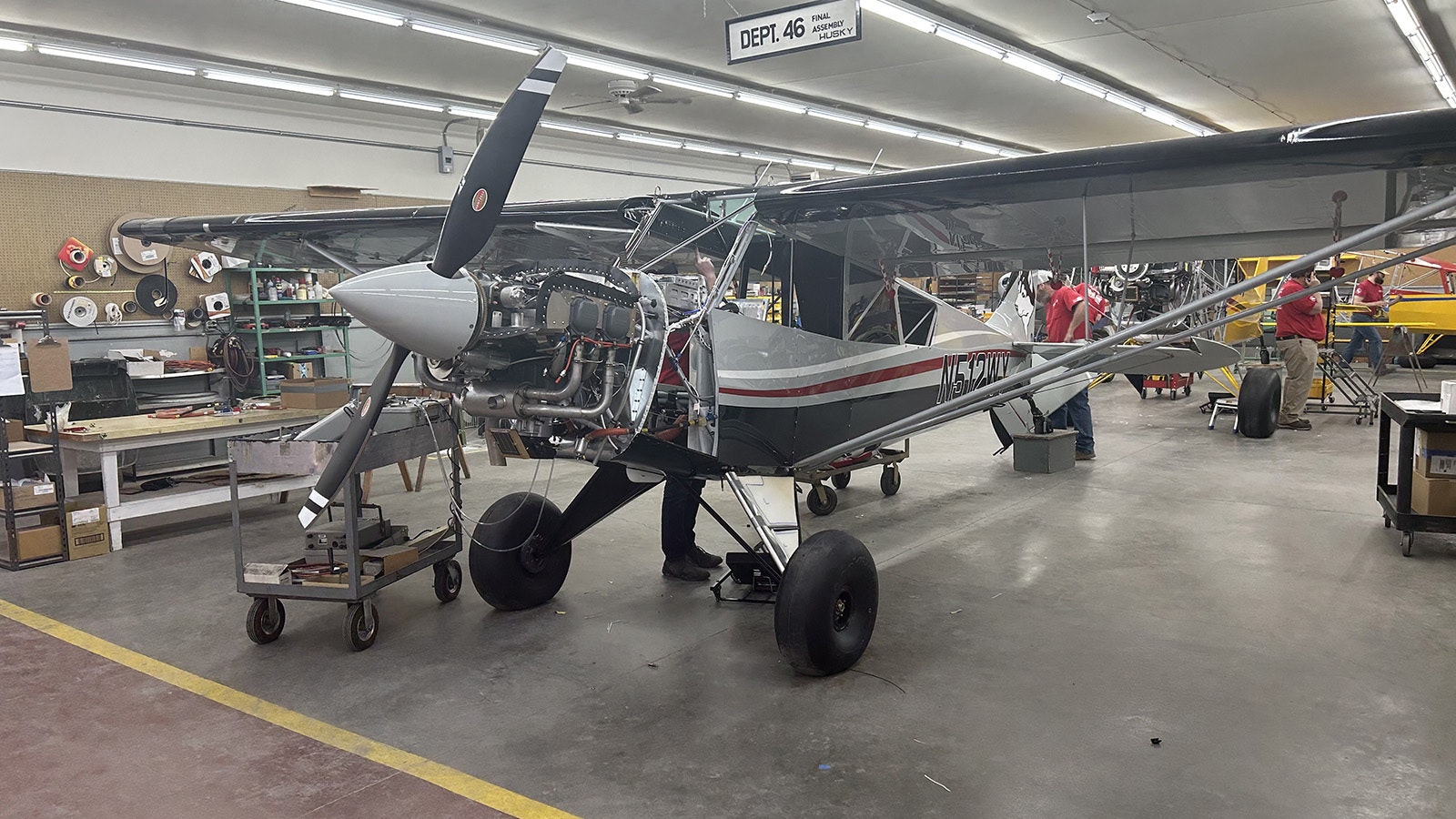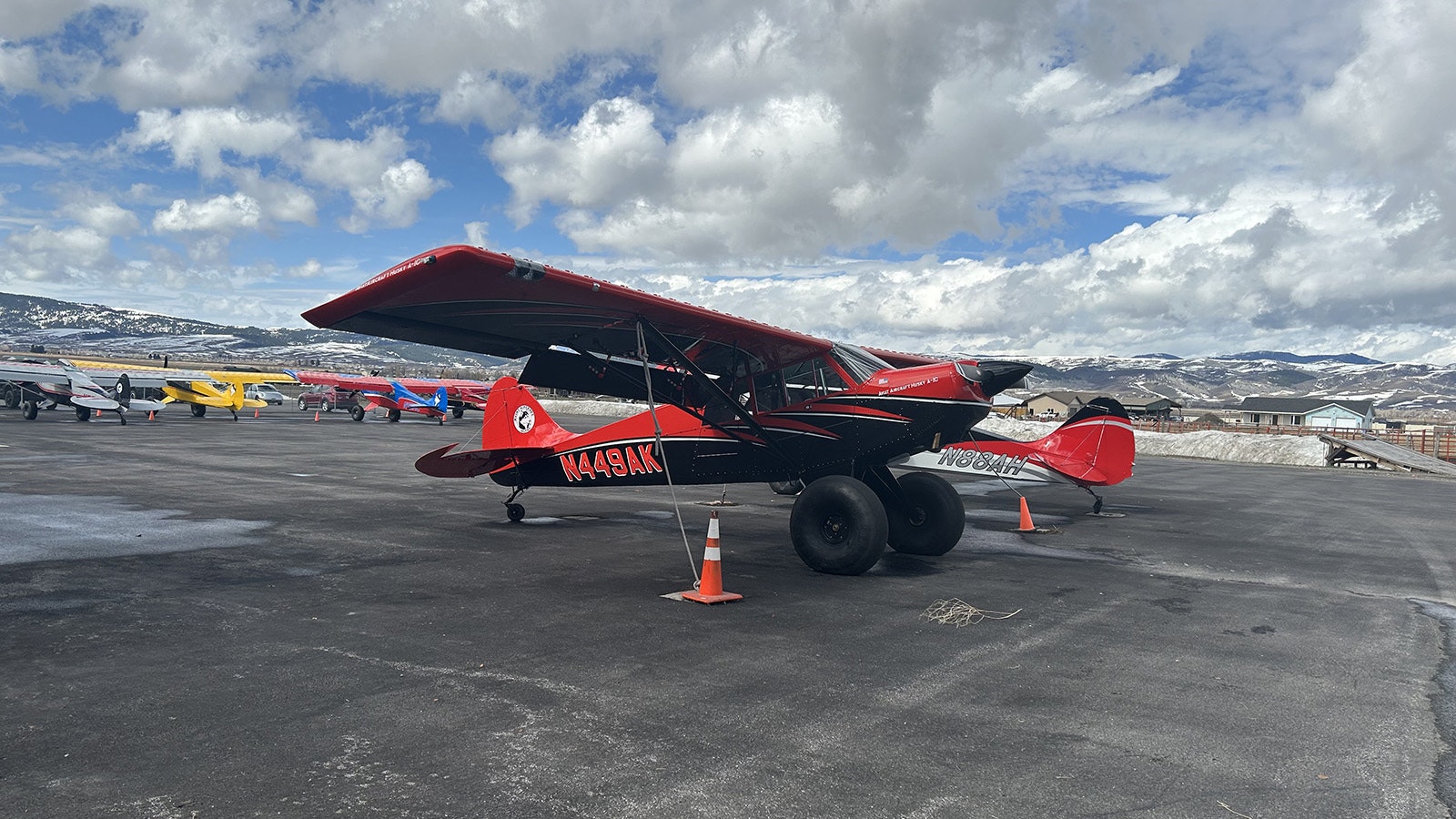Aviat Aircraft in Afton, Wyoming, is the longest continuously operating aircraft builder in the United States, billing itself as “Home of America’s Favorite Taildraggers.”
About 50 employees turn out an average of one single-engine aircraft every nine working days, said Kelly Christensen, Aviat’s accountant, tour guide and former production manager. He’s been with the company for 25 years.
Aviat airplanes are built by hand by skilled craftspeople, and there’s only one automated machine in the whole plant — a router used to cut aluminum parts.
Together, they build the Aviat Husky, a two-seat bush plane that can take off and land on nearly any surface; the Pitts Special, a two-seat, high-performance, bywing aerobatic airplane first-flown in 1944; and the Aviat Eagle, another aerobatic biplane sold as a kit for homebuilders.
The Pitts Special is capable of speeds up to 200 miles per hour and can fly for about two hours on a full load of fuel. The Husky’s cruising speed is about 140 mph and can fly for about six hours, or 800 miles, on a full fuel load of 50 gallons, Christensen said.
Change In Flight Plan
Changes in the economy brought on by the 9/11 terrorist attacks and the 2008 real estate collapse caused the market for small airplanes to soften, and Christensen said since then the more practical Husky has dominated the factory’s production.
“The Husky has become the bread-and-butter for the company over the last several years,” Christensen said. “9/11 hurt the economy, and ever since it seems like we would get going good and something would happen, the mortgage crisis then COVID.
“We would get people trained and then the economy would drop out so we decided to try to stay at a more level pace.”
For anyone shopping for a new Husky, the price tag is in the $450,000 range and the plant is booked through early August. Aviat also does repairs, upgrades and annual inspections. In addition, they ship parts all over the world.

Almost Everyone On The Planet
Christensen said Aviat’s airplanes are operating in nearly every country on the planet, except China.
In recent years, several Huskys have been sold in Africa, where they’re used to monitor and manage big game herds and livestock. Huskys are commonly used by ranchers, outfitters and in law enforcement.
But Christensen said the bulk of the company’s customers fly Huskys mainly for pleasure.
A pilot who posted a YouTube review (“Flying with Rich”) said he likes the Husky because it can take him almost anywhere he wants to go.
In the Aviat lobby there’s a photograph of a Husky sitting on a snowfield in front of the Matterhorn in the Swiss Alps.
Famous owners of Husky airplanes include Chuck Yeager, Harrison Ford and country singer Alan Jackson. Actor Tom Cruise owns a Pitts Special, Christensen said.
The Stats
The Aviat Husky, available in 180 horsepower and a fuel-injected 200-horsepower model, is all wing when you look at if from the rear. The big wing allows it to take off and land in short distances.
The engines, made by Lycoming Foundry and Machine Co. in Williamsport, Pennsylvania, are horizontally opposed, piston driven four-cylinder drivers. The propellers are made by Hartzell in Piqua, Ohio, and most of the steel tubing and aluminum comes from suppliers in California, Christensen said.
Aviat advertises that a Husky needs 200 feet to take off and only 300 feet to land and come to a complete stop. A review written in Aviation Consumer Magazine says it will safely take off and land on a football field.
The Husky comes with big, squishy tires up to 35 inches tall, and a rugged suspension system that soaks up bumps. It can land and take off from gravel bars, beaches, lakes and frozen lakes, ridgetops and tundra. They also can be equipped with skis, floats or amphibious pontoons with wheels.
Deep Wyoming Roots
The Call family, among the original settlers of Star Valley, started the business, Call-Air, in the late 1930s.
The company has had four owners over the years. It’s now owned by Stuart Horn, a pilot and New York real estate developer. Horn bought the company in 1995.
The plant had to stop building airplanes during World War II because it couldn’t get aircraft parts, Christensen said. Instead, Aviat built snowmobiles during the war.
He also said that there are aircraft manufacturers in the U.S. that have been in business as long as Aviat, including Boeing and Cessna, but not operating from the same place.
Christensen said Star Valley is growing fast with people who can work from home and want to escape the big cities. Hiring new people to build airplanes is a challenge because the housing market there in west-central Wyoming is tight.
Tours of Aviat Aviation are available by appointment.







